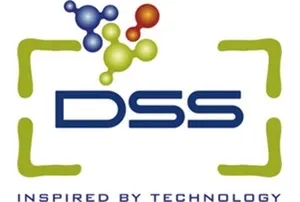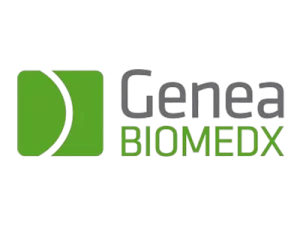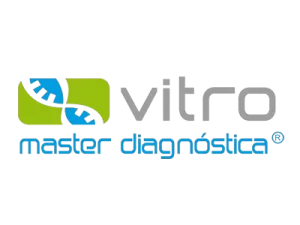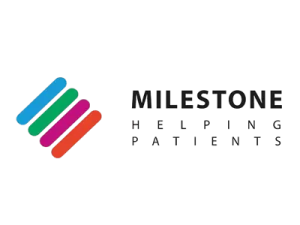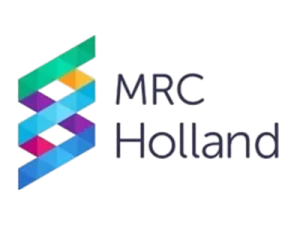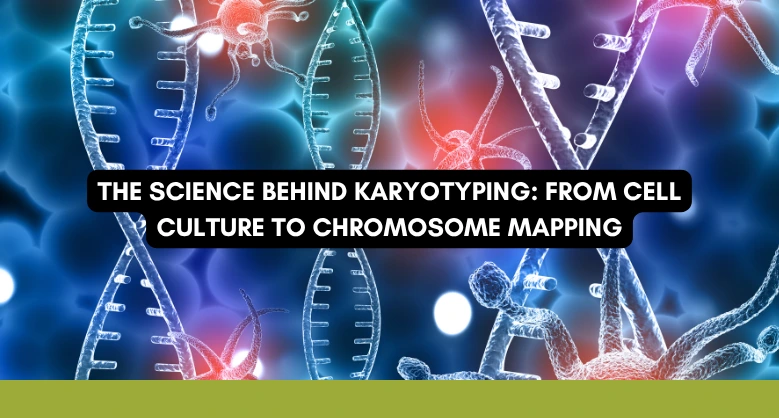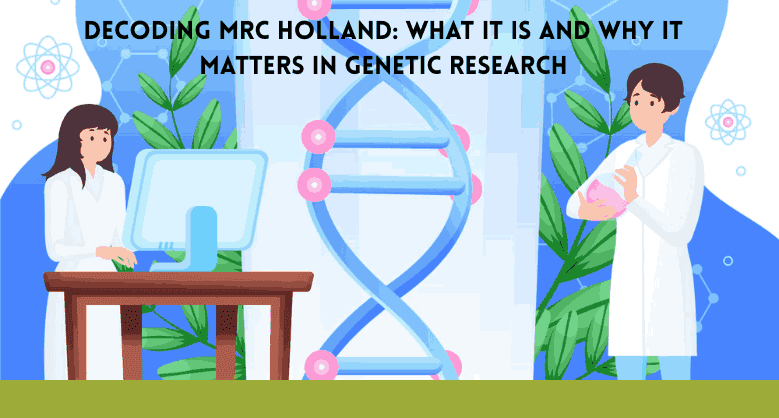DSS: Redefining Biotechnology & Life Science in India
- About Us
- Products & Services
PRODUCTS & SERVICES
-
Kits Reagents & Consumables
- Cytogenetics
- Dyes
- Fluorescence In Situ Hybridization (FISH)
- High-Performance Liquid Chromatography (HPLC)
- Histology
- Immuno Histo Chemistry (IHC)
- IVF Consumer bill
- Molecular Pathology & Diagnostics
- Multiplex Ligation-Dependent Probe Amplification (MLPA)
- Nucleic Acid Extraction
- PharmDx
- Real Time PCR
- Special Stains
- Instruments
- Software
- Accessories
- Advanced Material
-
Kits Reagents & Consumables
- Applications & Specialities
All Applications & Specialities
- Brands
- Contact Us
-

-
 0
0
- ☰
- About Us
- Products & Services
-
Kits Reagents & Consumables
- Cytogenetics
- Dyes
- Fluorescence In Situ Hybridization (FISH)
- High-Performance Liquid Chromatography (HPLC)
- Histology
- Immuno Histo Chemistry (IHC)
- IVF Consumer bill
- Molecular Pathology & Diagnostics
- Multiplex Ligation-Dependent Probe Amplification (MLPA)
- Nucleic Acid Extraction
- PharmDx
- Real Time PCR
- Special Stains
- Instruments
- Software
- Accessories
- Advanced Material
-
Kits Reagents & Consumables
- Applications & Specialities
- Brands
- Brand - Life Sciences
- 3i
- ABBERIOR INSTRUMENTS
- Abbott Molecular
- ADS Biotec
- APPLIED SPECTRAL IMAGING
- BioAir Tecnilabo
- DAKO (AGILENT)
- Eden Tech
- Elveflow
- ENTROGEN
- EUROCLONE
- EVIDENT
- Genea
- Hamamatsu Photonics
- Invivoscribe
- MASTER DIAGNOSTICA
- MBF BIOSCIENCE
- Medical Tek Co. Ltd
- MILESTONE MED SRL
- Molecular Machines & Industries
- MRC HOLLAND
- NeoDx
- Onward Assist
- Profound
- SCIENTIFICA
- SpaceGen
- Seqlo
- µCyte
- Brand - Industrial
- Brand - Life Sciences
- News & Events
- Career
- Contact Us
- Testimonial
- Blogs
- R&D
- CSR
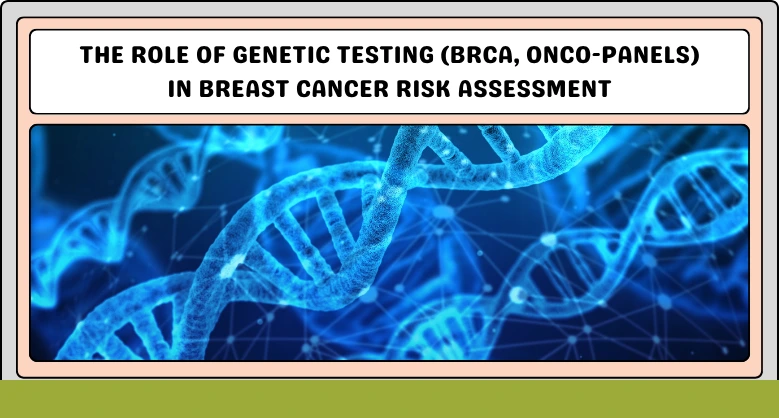
The Role of Genetic Testing (BRCA, Onco-panels) in Breast Cancer Risk Assessment
BY DSS Imagetech Pvt Ltd November 18, 2025
Breast cancer is a complex and deeply personal diagnosis that will affect many women in their lifetime. For decades, our primary approach was reactive: focusing on awareness, monthly self exams, and annual mammograms starting at a certain age, all in the hope of finding cancer early, once it had already formed. We treated it as a disease of chance, a stroke of bad luck. But what if for some, it isn’t? What if, for a significant number of individuals, the risk is not just a random lottery but a predictable outcome written into their very DNA?
This question is the driving force behind one of the most profound shifts in modern medicine: the move from reaction to prediction. We now understand that not all breast cancer is sporadic. A small but significant portion of all breast cancers are hereditary, passed down through families, generation after generation. This knowledge has armed us with a powerful new set of tools. We are no longer limited to just “waiting and seeing.” We can now examine our genetic code directly to identify individuals at a significantly higher risk.
This is the world of genetic testing. It is a field that has evolved at a breathtaking pace, moving from the landmark discovery of the BRCA testing genes to the development of comprehensive Onco-panels that analyze dozens of genes simultaneously. Understanding these tests is no longer a niche topic; it is an essential component of modern, personalized healthcare. This blog will explore the science behind genetic testing for breast cancer risk, what these tests look for, who should consider them, and how their results can empower individuals to take control of their health long before a diagnosis is ever made.
Our genes hold the blueprint for hereditary cancer risk
To understand genetic testing, we first need to understand the basics of our biology. Every cell in our body contains DNA, a vast instruction manual that tells our cells how to grow, function, and divide. These instructions are organized into “genes.” You can think of each gene as a specific recipe for a protein, and these proteins do all the work in the cell.
Our bodies have a remarkable system for preventing cancer. Among our 20,000 plus genes are a special class known as tumor suppressor genes. Their job is exactly what it sounds like: they are the “brakes” for cell growth. They repair damaged DNA, tell cells when to stop dividing, and, in a worst case scenario, instruct a faulty cell to self destruct (a process called apoptosis). We inherit two copies of every gene, one from each parent. As long as at least one copy of a tumor suppressor gene is working, the brakes are functional.
Hereditary breast cancer occurs when an individual inherits a “pathogenic variant,” or a mutation, in one copy of a key tumor suppressor gene. This person is born with one of their two brake systems already faulty. They do not have cancer. But in every cell of their body, they are one step closer to it. If a random mutation occurs during their lifetime that damages the second working copy in a breast cell, that cell loses its brakes entirely. It can then begin to divide uncontrollably, forming a tumor.
Genetic testing is the process of reading the DNA sequence of these specific tumor suppressor genes to identify inherited, “first hit” mutations. It is not a test for cancer. It is a test for risk.
BRCA gene testing changed our approach to early detection
The revolution in hereditary cancer risk assessment began with two specific genes: BRCA1 and BRCA2 (which stand for Breast Cancer gene 1 and 2). Discovered in the mid-1990s, these are the most famous and well-studied genes associated with hereditary breast and ovarian cancer (HBOC) syndrome.
BRCA1 and BRCA2 are classic tumor suppressors. Their normal function is to repair damaged DNA. When a mutation prevents them from doing their job, DNA damage accumulates, and cancer risk skyrockets. The numbers are stark and illustrate why BRCA testing is so critical.
A woman in the general population has a certain baseline lifetime risk of developing breast cancer.
- A woman with a BRCA1 mutation has a very high lifetime risk.
- A woman with a BRCA2 mutation also has a dramatically increased lifetime risk.
The risk for other cancers also increases dramatically. A woman in the general population has only a very low lifetime risk of ovarian cancer, a notoriously difficult disease to detect early.
- A woman with a BRCA1 mutation has an exceptionally high lifetime risk.
- A woman with a BRCA2 mutation has a significantly elevated lifetime risk.
These mutations are not limited to women or to breast and ovarian cancer. BRCA mutations, particularly BRCA2, significantly increase the risk for male breast cancer (which is very rare in the general population) and for a more aggressive form of prostate cancer. Both genes are also linked to an increased risk of pancreatic cancer.
This discovery changed everything. It provided a concrete, biological explanation for families decimated by cancer. It also created an urgent clinical need to identify these high-risk individuals. This led to the development of clinical guidelines for who should be offered BRCA gene testing for early detection. Testing is generally recommended for individuals with:
- A personal history of breast cancer, especially if diagnosed at a young age (before 50), if the cancer was triple negative (a specific aggressive subtype), or if they developed cancer in both breasts.
- A personal history of ovarian, pancreatic, or metastatic prostate cancer at any age.
- A family history of a known BRCA mutation. If a relative has tested positive, all their first-degree relatives (parents, siblings, children) have a one in two chance of carrying the same mutation and should be tested.
- A strong family history of cancer, such as multiple relatives with breast cancer, relatives with early onset breast cancer, or a history of male breast cancer, ovarian, or pancreatic cancer in the family.
- Specific ancestries. For example, individuals of Ashkenazi Jewish descent have a much higher chance of carrying a BRCA1 or BRCA2 mutation than in the general population.
For these individuals, a positive BRCA test is a pivotal, life-changing piece of information that unlocks a new pathway of preventative care.
Modern onco panels look beyond just the BRCA genes
For many years, the genetic testing story began and ended with BRCA1 and BRCA2. A patient with a strong family history would get tested, and if the result was negative, they would be told we could not find a genetic reason for their family’s cancer. This was deeply frustrating for both patients and doctors. We knew there had to be more to the story.
And there was. Thanks to rapid advancements in DNA sequencing technology, scientists began discovering a host of other genes that, when mutated, also confer a high risk for breast and other cancers. Testing for these genes one by one was slow and not cost-effective. This led to the single biggest evolution in this field: the creation of Onco-panels.
An onco panel, or multi-gene panel, is a single test that analyzes many different genes at the same time from one blood or saliva sample. Instead of only examining BRCA1 and BRCA2, a modern panel might assess 20, 50, or even more than 80 different cancer-associated genes.
These Onco-panel tests for hereditary breast cancer have become the new standard for a simple reason: they provide a much more complete and accurate picture of a person’s risk. They allow us to find answers for families who were previously left in the dark.
These panels typically look for genes in three categories:
- High-Penetrance Genes: These are genes that, like BRCA1 and BRCA2, carry a significantly high lifetime risk of cancer. A positive result in one of these genes leads to the same intensive management recommendations as a BRCA mutation. This category includes:
- PALB2 (Partner and Localizer of BRCA2): As its name suggests, this gene works with BRCA2. A PALB2 mutation carries a lifetime breast cancer risk that is substantially higher.
- CDH1: A mutation in this gene causes Hereditary Diffuse Gastric Cancer syndrome, which carries a very high risk for a specific type of stomach cancer and a significant risk for lobular breast cancer.
- PTEN: Mutations cause Cowden syndrome, which involves a high risk of breast, thyroid, and uterine cancers.
- TP53: Mutations cause Li Fraumeni syndrome, a rare condition associated with very high risks for a wide variety of cancers, often starting in childhood, including breast cancer.
- Moderate Penetrance Genes: These genes increase breast cancer risk, but not as significantly as high-penetrance genes. A mutation might confer a moderately increased lifetime risk. While this is lower than the BRCA risk, it is still substantially higher than the risk for the general population. Knowing this is crucial, as it will still change a woman’s screening plan. This category includes genes like ATM and CHEK2.
- A Broader Net: Panels also include genes linked to other cancer syndromes (like Lynch syndrome, which is primarily linked to colon and uterine cancer but also slightly increases breast cancer risk). This provides a holistic view of the patient’s total hereditary cancer risk.
By using Onco-panels, we find that of all the hereditary breast cancer mutations identified, BRCA1 and BRCA2 account for only around half. The other half are found in these other genes. This means that for every person identified with a BRCA mutation, there is another person with a different, equally important mutation who would have been missed if we had not used a multi-gene panel.
Genetic counseling is essential to interpret test results
The power of genetic testing is immense, but so is its complexity. This is not a simple blood test, like a cholesterol check, where the results are a single number. The results of a genetic test have profound, lifelong implications for the patient and their entire family. Because you share your genes with your relatives, a positive result for you means your siblings, parents, and children each have a one in two chance of carrying the same mutation.
This is why genetic counseling is a mandatory, non-negotiable part of the genetic testing process. A genetic counselor is a healthcare professional with specialized training in medical genetics and counseling. Their role is to guide and advocate for you throughout this entire journey.
A genetic counselor will:
- Take a Detailed Family History: They will map out your family’s health history (a pedigree) to identify patterns of cancer that suggest a hereditary syndrome.
- Help You Decide on Testing: Based on your personal and family history, they will discuss which test is most suitable for you. Is it a targeted test for a known family mutation? Is it a BRCA-only test? Or is a broad onco panel the best choice?
- Explain the Possible Results: Before you are even tested, they will walk you through the three possible outcomes:
- Positive: A pathogenic variant (mutation) was found. This confirms a hereditary cancer risk syndrome and unlocks a clear management plan.
- Negative: No mutation was found. In a family with a known mutation, this is a true negative and a huge relief. It means you did not inherit the family’s risk. In a family with no known mutation, this is more ambiguous. It means you are “negative” for all the genes on the panel, but it doesn’t explain your family’s history, so you may still be considered high risk based on family history alone.
- Variant of Uncertain Significance (VUS): This is a very common result, especially with large onco panels. A VUS means the lab found a “typo” in a gene, but science does not yet know if that specific typo is a harmless spelling variation (like “color” vs. “colour”) or a truly harmful mutation that breaks the gene. A VUS is not treated as a positive result. It is not actionable, and medical decisions should not be made based on it. Your counselor will explain this complex result and monitor the scientific literature, as many VUS are eventually reclassified as harmless (benign) over time.
- Discuss the Implications: They will help you process the medical, emotional, financial, and psychological aspects of the test, including how and when to talk to your family members about your results.
A positive test result empowers proactive medical decisions
Receiving a positive result from a genetic test can be overwhelming and frightening. But it is crucial to reframe this. A positive test is not a diagnosis of cancer. It is the single most powerful piece of information you can have for preventing cancer. It turns you from a passive worrier into a proactive manager of your own health. It provides a clear, evidence-based roadmap for early detection and risk reduction.
For individuals with a positive result from BRCA testing or an onco panel, standard screening recommendations are no longer sufficient. They are enrolled in a high-risk surveillance program, which typically includes:
-
Enhanced Breast Screening:
-
- Earlier Start: Instead of starting mammograms at 40, women often start breast screening as early as age 25 or 30.
- Better Tools: Mammograms alone are often not enough, especially in younger women who tend to have dense breast tissue. High-risk guidelines call for an annual breast MRI in addition to an annual mammogram. These tests are often alternated every six months, meaning the patient is getting a high-sensitivity screening test twice a year.
2. Enhanced Screening for Other Cancers:
- Ovarian Cancer: Because there is no reliable screening test for ovarian cancer, high-risk women are closely monitored and counseled on symptom awareness.
- Pancreatic Cancer: For those with BRCA or PALB2 mutations, some centers offer screening for pancreatic cancer (often with endoscopic ultrasound or MRI), a cancer that is otherwise almost never found early.
- Prostate Cancer: Men with BRCA mutations, especially BRCA2, are advised to begin prostate cancer screening (PSA blood test) much earlier, often at age 40.
3. Chemoprevention:
- This involves taking medications, such as Tamoxifen or Raloxifene, that are proven to reduce the risk of developing breast cancer in high-risk women.
4. Risk Reducing Surgeries (Prophylaxis):
- This is the most aggressive and most effective preventative step.
- Risk Reducing Mastectomy (RRM): The proactive surgical removal of both healthy breasts. This procedure can reduce the risk of developing breast cancer by an extremely high amount.
- Risk Reducing Salpingo Oophorectomy (RRSO): The surgical removal of the ovaries and fallopian tubes, typically recommended between ages 35 and 45 (depending on the gene). This surgery is transformative. It dramatically reduces the risk of ovarian cancer and, as a secondary benefit, also substantially reduces the risk of breast cancer (by removing the body’s main source of estrogen).
The future is personalized prevention
The journey from a vague awareness of “cancer in the family” to a precise, gene-specific management plan is one of the greatest medical achievements of our time. Genetic testing for breast cancer risk has fundamentally changed the conversation. We are no longer bound by the one-size-fits-all guidelines of the past.
The discovery of BRCA1 and BRCA2 was the first step. The development of comprehensive Onco-panel tests for hereditary breast cancer was the second. These tools have enabled us to identify numerous individuals and families who were unaware they were living with a ticking clock, and to empower them to defuse it.
Knowledge is always power, and in the case of hereditary cancer, that power is life-saving. It allows a person to move from a position of fear and uncertainty to one of authority and action. It allows them to write their own future, one defined not by their inherited risk, but by their proactive, empowered, and courageous choices.
Faq’s :-
1. What is the role of genetic testing in breast cancer risk assessment?
Genetic testing helps identify individuals who carry inherited mutations in specific genes—such as BRCA1, BRCA2, or other cancer-associated genes—that significantly increase their risk of developing breast and other cancers. It allows doctors and patients to shift from a reactive approach (detecting cancer early) to a predictive and preventive approach, enabling personalized screening and prevention strategies before cancer develops.
2. Who should consider BRCA or Onco-panel genetic testing?
Testing is recommended for individuals with: a personal or family history of breast, ovarian, pancreatic, or prostate cancer (especially at a young age); a known family BRCA mutation; multiple relatives affected by these cancers; or specific ancestries such as Ashkenazi Jewish descent, which have a higher prevalence of BRCA mutations.
3. What is the difference between BRCA testing and Onco-panel testing?
BRCA testing focuses only on two high-risk genes, BRCA1 and BRCA2, associated with hereditary breast and ovarian cancers. Onco-panels are advanced multi-gene tests that examine 20–80 or more genes simultaneously, including PALB2, TP53, PTEN, CDH1, CHEK2, and others. These panels provide a broader and more accurate picture of a person’s hereditary cancer risk.
4. What does a positive genetic test result mean?
A positive result indicates the presence of a pathogenic mutation that increases cancer risk, but it does not mean you have cancer. It allows individuals to take proactive measures such as enhanced screening (earlier and more frequent mammograms and MRIs), preventive medications (chemoprevention), and risk-reducing surgeries such as mastectomy or salpingo-oophorectomy to drastically lower cancer risk.
5. Why is genetic counseling important before and after testing?
Genetic counseling is essential because test results can impact not just the patient but their entire family. A genetic counselor helps interpret complex results (positive, negative, or uncertain), discuss emotional and medical implications, guide testing decisions and next steps for family members, and provide support in understanding and managing hereditary cancer risk responsibly.
Latest Articles
The Role of Genetic Testing (BRCA, Onco-panels) in Breast Cancer...
BY DSS Imagetech Pvt Ltd November 18, 2025
Breast cancer is a complex and deeply personal diagnosis that will affect many women in their lifetime. For decades, our primary approach was reactive: focusing on awareness, monthly self exams,...
Read MoreThe Science Behind Karyotyping: From Cell Culture to Chromosome Mapping
BY DSS Imagetech Pvt Ltd November 18, 2025
In the nucleus of every one of your cells, your entire genetic blueprint is meticulously packaged into structures called chromosomes. This “book of life” contains every instruction that makes you...
Read MoreDecoding MRC Holland: What It Is and Why It Matters...
BY DSS Imagetech Pvt Ltd October 15, 2025
In the vast and complex world of our DNA, tiny changes can have monumental consequences. For decades, scientists have sought reliable and efficient ways to read this genetic blueprint, to...
Read More
